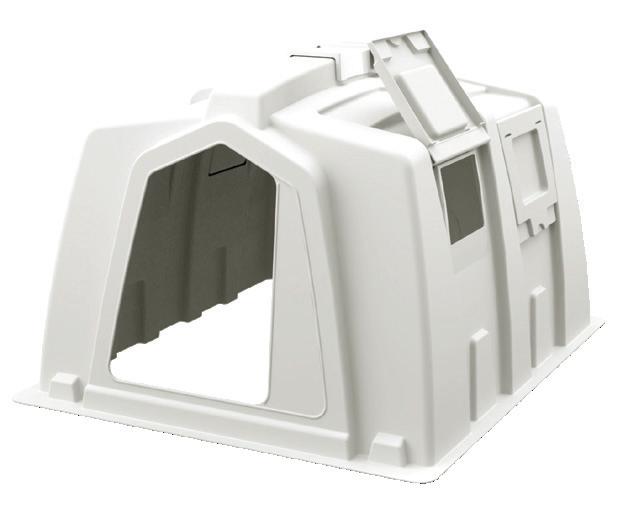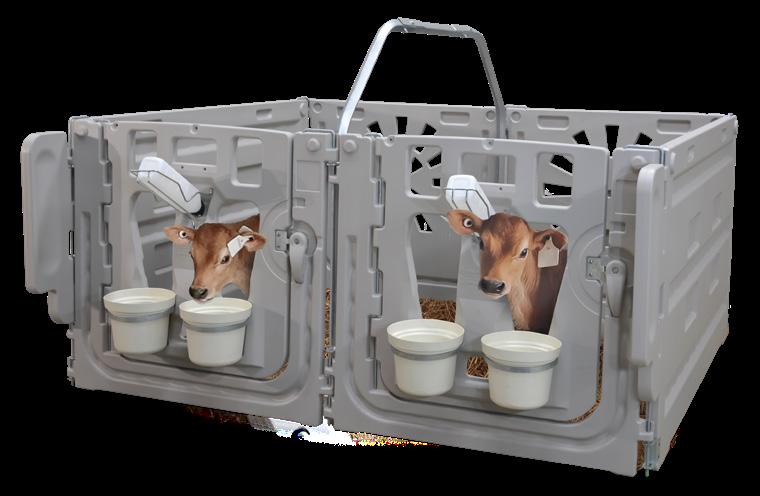
5 minute read
Manure management
from November 2021
by MilkProducer
NOT ALL SOILS SHOULD BE MANAGED THE SAME WAY


By Lillian Schaer CONTRIBUTOR
Using best management practices (BMPs) to manage phosphorus losses on-farm may not be enough, suggests leading phosphorus and water quality expert Dr. Merrin Macrae. Instead, using targeted phosphorus management zones tailored to geographic areas and soil conditions could yield better results.
This is particularly the case for Lake Erie, where agriculture is a source of phosphorus that contributes to water quality issues.
“We’ve been applying BMPs in the watershed, but things aren’t getting better fast enough so we need to be strategic and use the practices that have the best effect depending on where we live,” she says during a presentation at the North American Manure Expo this summer. “There are different things farmers can do to reduce phosphorus losses from their farms, with some more effective than others.”
It’s generally recognized there is no one practice—the so-called silver bullet—that will solve all phosphorus issues for every grower, so prevailing agronomic advice has long promoted the idea of stacking BMPs or doing as many as possible for maximum benefit.
Macrae says that may not always be the most economical approach, especially if the anticipated outcome isn’t clear.
“What we’re really trying to do is optimize BMP selection by being strategic,” she says. “You may only be able to do one BMP, so you want to make sure what you choose is the best for your situation and that it will have a really good effect.”
That means accounting for climate variability, differences in the landscape, tile drainage levels and how land is used. Those differences can extend right into a specific watershed, such as Lake Erie, where the northeast gets more snow and has longer snow cover than the southwestern areas, and soils vary from flat clay to sloping loam.
This impacts how water and phosphorus move across fields and through the soil, with both surface and sub-surface runoff contributing to losses.
When monitoring three sites in the watershed over eight years (Londesborough, Ont., Ilderton, Ont., and Essex, Ont.), Macrae and her team noted differences in how water runs off and what its phosphorus concentrations are, depending on the site’s location, its climate and soil types.
BUDDY UP.
SUPREME BUDDY HUTCH
Ultra Flex-Pen
ULTRA FLEX-PEN
NEW! DUAL XL DELUXE

The Leader in Paired Calf Housing
1-888-231-3575 • 1-905-945-3116 CALFHUTCH.COM
WHAT IT MEANS FOR GROWERS
Reduce soil phosphorus
This can decrease phosphorus loss in both surface and subsurface runoff. Keep levels to what’s agronomically appropriate, but avoid overapplying, and figure out ways to spread manure out over more fields. According to Macrae, getting soil phosphorus down to what is needed
agronomically is a first line of defence that will work on all farms.

Apply at the right time
Most runoff and associated phosphorus losses happen in the spring or during wet periods in the fall. Earlier is better if applying in the fall, she recommends, and in the spring, the best time is at planting.
“Don’t apply on frozen ground. When snow melt happens, that manure is washed straight off the fields and into the water, so that’s probably the worst thing you can do,” she advises. “The Goldilocks time from a water quality perspective is during drier periods, and the best thing you can do is to avoid wet periods so phosphorus can stabilize in the soil.”
Placement matters
Research by one of Macrae’s graduate students has shown subsurface banding fertilizer reduced winter nutrient losses in drainage by 60 per cent for both phosphorus and nitrogen. When applying manure, gentle incorporation is also a good idea to keep nutrients from running off.

Manage no-till
Knowing how water leaves a field is important for realizing both the benefits of no-till and keeping phosphorus in place.
“You want to manage phosphorus in surface or subsurface runoff—and we know surface runoff is more important in northeastern regions of the watershed, and subsurface in the southwest,” she says. “In the southwest, for example, if you’re a no-tiller, apply the nutrients in a subsurface band with seed at the time of planting, and if you must surface broadcast, a low disturbance gentle incorporation is a good idea. Otherwise, you’ll be vulnerable to loss in the tiles.”
Cover crop choice
Although cover crops can build soil health and reduce phosphorus loss in runoff, in the Prairies, they’ve also been shown to increase spring phosphorus losses after freezing in the winter. That’s not the case in Ontario, where temperatures aren’t as cold and snow cover insulates crop residues and cover crops.
“We looked at the potential for phosphorus loss after freeze-thaw cycles and when you have
modest frosts, especially in snow-covered regions, the plants can handle it without releasing a lot of phosphorus,” she says. “In snowfree areas, such as the southwestern region of this watershed, you run the risk, but you can manage your cover crop choices to lessen that risk. We found tender species, such as oilseed radish and oats, lost a lot more phosphorus than cereal rye, vetch or red clover.”
Manage point sources
In areas with livestock, keep cattle out of streams, have adequate manure storage and don’t apply manure on frozen ground or during wet periods. As well, check on bunker silos and make sure runoff is managed properly.
“Some practices will work well everywhere, such as keeping soil phosphorus low and using the right placement and timing for fertilizer,” she says. “But tillage and cover crop effects will depend on where you live and have to be treated with more care so we’re optimizing what we do to minimize phosphorus losses.”
More information about manure stewardship and long-term nutrient management options are available at https://www.farmfoodcareon.org/timing-matters/.
Lilian Schaer
is a freelance agricultural journalist, writer and communications professional based in Guelph, Ont. She was born in Switzerland and raised on a dairy farm in Grey County. Follow her on Twitter @foodandfarming.
This article is provided by Farm & Food Care Ontario as part of the Timing Matters project. The project is funded by the Ontario Ministry of Agriculture, Food and Rural Affairs.
Save Sand. Save Equipment. SAVE $$$
Supports hooves, keeps bed level and minimizes sand or compost waste up to 50%! 1-888-231-3575 1-519-533-7643
Sand bedding moved to show Agri-Grid Sand Saver at work!









